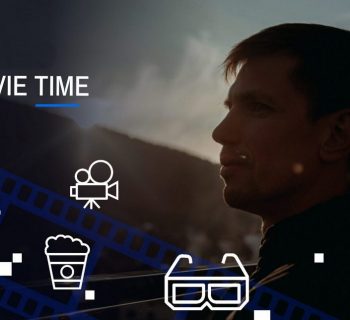I’m Nazar, a Program Manager at Group 107. My way in IT and directly PM for over 5 years. I started out quite organically, I started to show my managerial skills at the university. It so happened that I was first chosen as the head of the group. I also need to clarify that I was a technical student and was supposed to become a .NET developer. Our department had several contracts with leading IT companies in Ukraine and we had common semesters and projects. On these projects, we were explained, that each project is not only a direct development but also discussion, planning, and modeling. I was usually chosen to be the manager. I really liked it and, in fact, my first job was as a project coordinator.
Responsibilities of the Program
Manager

- Discussion with the client of the project vision, ideas, ways of business development, new markets.
- Team management at the administrative level. That is workers’ escalation, their salaries, individual development plans.
A Client Comes, What is Next?
I love Group 107 company because we don’t need to validate the client. Generally, as a rule, program managers validate the client. We only get those clients who are completely ours – we can provide them with the necessary services, and clients are satisfied with all the conditions.
Therefore, then I arrange an intro call to find out, so to speak, the input data – what the client came to us with, what ideas and vision of the project he has, what functions he wants to see in the product. Mostly, clients come because they want to solve some problems of their own.
We, for our part, take into account all the ideas and thoughts of the client and begin to describe them “on paper”. If there are any questions, then we clarify them with the client and then start preparing the proposal. This includes technical services, timing, and budgeting. Next, the client reviews the proposal and makes his own adjustments, if desired. For example, a client orders an educational platform and wants it to work on September 1. Then I make changes to the proposal, for example, add the number of new talent to the team and reconcile everything with the client. Thus, a consensus is reached.
The next step is to prepare a contract and sign it with the client.
How to Find a Compromise
Between the Team and the Client?
It often happens that while working on a project, a client wants to make certain changes. Each project is unique. First, you have to listen, a request from a client. For example, this request has not been previously discussed. If the client’s request is critical, that is, for example, some feature is really necessary, then you need to set a time frame when it will be implemented into reality. Another scenario is also possible – the feature is not too critical, but the client wants it. Then I talk to the team, it becomes clear that the implementation of this feature does not “break” the flow and we start implementation as soon as possible.
It is also possible that the client wants a certain feature that is critical and needs to be implemented now. Then, for my part, I offer several options:
- We can move the deadline
- We can remove a few previously agreed features
- We can hire more developers, respectively, the project budget will increase
Then it is up to the client to decide. Our duty is to offer as many options as possible and advise, show the project from different angles, and help determine.
Client “Do something” – the Difficulties of
Working with Such
It’s no secret that a client turns to us as experts and wants his problem to be solved. By “problem” we mean a specific request, an idea. The client does not have to be tech-savvy, this is our job, hence the requests “do something, do cool”. Let’s talk about it from the point of view of 2 aspects.
1 aspect
The client has an idea but lacks the details. This is where the business analyst starts. His task is to collect, clarify, explain, write down the client’s requirements. That is, ultimately “with a client for a client.” We show another future project from different angles and explain what and how it will be. The client’s task at this stage is to approve or reject. This is where the frame is built, which we build together with the client. Simply put, what kind of button should be, what should it do, where should it be. This is where the estimate for the project comes from.
2 aspect
The second aspect is the design. Not the most important thing for me. The design should be trendy and so that the client likes it. As we understand it, design is a matter of taste, in the client’s case. After all, designers are mainly guided by modern trends. If the client has explained all his wishes from a technical point of view, then from a design point of view, we always recommend listening to our team, which does a fantastic job. All designs look very modern and stylish. Designers need to combine the taste and vision of the client’s design and modern trends. And our team undoubtedly succeeds in this!
If you want to join the Group 107 team as a project manager, program manager, developer, tester or designer and work together on projects from scratch, then go to the vacancies page. There is definitely a project for you! If you just want to get started, then go to the internship program page. See ya!


